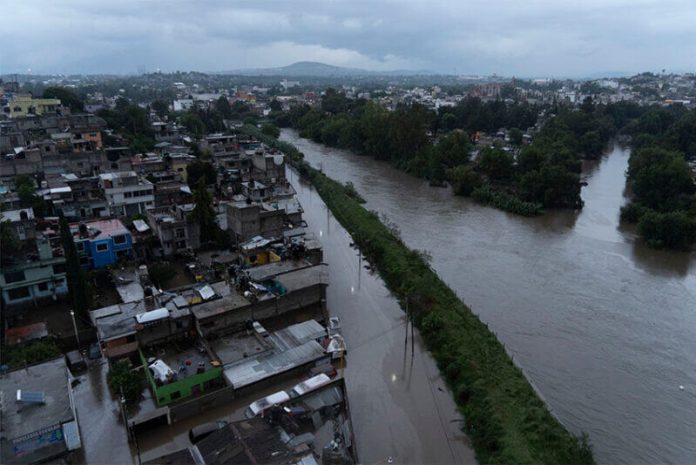Flooding that contributed to the deaths of 14 COVID-19 patients at a hospital in Tula, Hidalgo, in early September wasn’t caused by heavy rain in the local area but rather runoff from farther afield, according to the National Water Commission (Conagua).
Water that entered an IMSS hospital in Tula on September 7 flooded wards and damaged a generator which would have provided an alternative power supply for the oxygen machines on which patients were dependent. Heavy rain had cut electrical supply to much of the municipality.
In addition to the 14 COVID-19 patients who died, two other patients passed away just before water from the Tula River flooded the facility, according to IMSS director Zoé Robledo.
In an internal report disseminated by President López Obrador’s office this week, Conagua said the flooding was caused by runoff that reached Tula from outside that municipality, in particular the Valley of México, located about 60 kilometers to the south.
It said rain that fell in Mexico City and México state municipalities such as Ecatepec and Chimalhuacán flowed into the Tula River via tributaries and tunnels that drain water from the Valley of México metropolitan area.
Conagua said that runoff from the Sierra de Guadalupe, the collapse of the drainage system in Ecatepec, the overflow of a wastewater canal in Chimalhuacán and an increase in the water levels of dams that regulate water flows in the Tula River all contributed to the severe flooding in Tula.
“It wasn’t local rain but rather runoff from rivers, dams and drainage works in the Valley of México and the state of Hidalgo that caused the flooding,” the water commission said.
Up to 500 cubic meters of water per second flowed into the Tula River during the night of September 6, double the waterway’s capacity to integrate.
Carlos Paillés, a civil engineer and head of the Hidalgo Valleys Environmental Infrastructure Trust, said in late September that a flaw in the design of the Eastern Emission Tunnel (TEO) project, which was completed in 2019, was the main reason why Tula suffered severe flooding.
Paillés described the 30-billion-peso, 62-kilometer-long mega tunnel – built to reduce the risk of flooding in Mexico City – as an “extraordinary hydraulic engineering project” but one that is incomplete because it doesn’t include a canal that would allow runoff to flow into the Tula River at more than one point.
The Central Emission Tunnel, which drains wastewater from Mexico City, also flows into the Tula River as do the Salto, Tlautla and Rosas rivers. In 2017, the federal Environment Ministry called for work to be undertaken to increase the Tula River’s water-carrying capacity but it was never done. The Conagua report said that opposition from environmental groups stopped the project from going ahead.
The federal Attorney General’s Office is investigating to determine whether anyone can be held criminally accountable for the deaths of the COVID patients. The Conagua report said that the deaths occurred due to “a chain of unexpected, extraordinary, inevitable and uncontrollable events.”
With reports from El País
